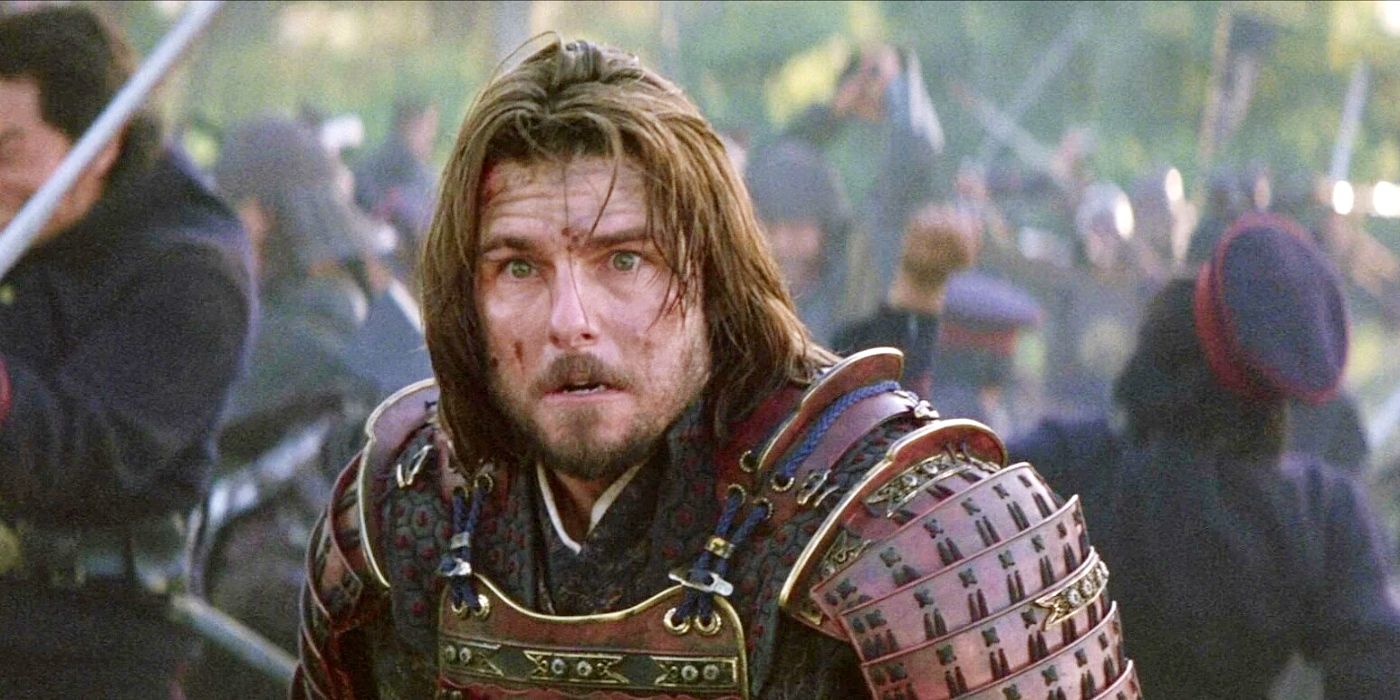
Here's ads banner inside a post
The Last Samurai Debate: Is Tom Cruise’s Portrayal of a Samurai Hero a Historical Flaw?
When The Last Samurai was released in 2003, it quickly became a major conversation piece in the world of cinema. Directed by Edward Zwick, the film follows Captain Nathan Algren (Tom Cruise), a disillusioned American military officer who, after being captured by samurai warriors during a mission in Japan, gradually becomes a part of their world. Through a mix of historical events and fictional storytelling, the movie explores the cultural clash between the traditional samurai class and Japan’s rapid modernization during the Meiji Restoration in the late 19th century.
Despite its stunning visuals, compelling performances, and heartfelt exploration of themes like honor, loyalty, and personal redemption, The Last Samurai has sparked considerable debate over the years. Specifically, Tom Cruise’s casting as the central character of Nathan Algren has been the focal point of much of the criticism. Is Cruise’s portrayal a genuine, respectful tribute to Japanese culture, or is it a problematic choice—one that diminishes the true historical significance of the samurai class? Does the film inadvertently reinforce a “white savior” trope or, worse, present a version of history that ignores the agency and complexity of the samurai?
Here's ads banner inside a post
This article delves deep into these questions and the controversies surrounding The Last Samurai, exploring not only the historical context in which it is set but also how its themes and the casting of Tom Cruise have sparked such debate.
The Historical Backdrop of The Last Samurai
To truly understand the controversy around The Last Samurai, it’s essential to grasp the historical backdrop in which it takes place. Set in the 1870s, during the height of Japan’s Meiji Restoration, the film focuses on a period of profound transformation. The samurai, once the dominant military and political class in Japan, were being sidelined as the country moved toward modernization and industrialization. The samurai’s traditional values of honor, loyalty, and martial prowess, which had defined Japanese society for centuries, began to clash with the demands of a rapidly evolving world.
The film loosely draws inspiration from the Satsuma Rebellion of 1877, which saw a group of samurai under the leadership of Saigō Takamori rising up against the new imperial government, which was eager to establish a modernized military force based on Western principles. The Last Samurai positions itself within this larger historical narrative, yet it takes considerable creative liberties, particularly with the character of Nathan Algren and his involvement with the samurai.
Here's ads banner inside a post
Algren is depicted as a former U.S. Army captain with a troubled past, struggling with his own demons after participating in the brutal conquest of Native Americans in the American West. When hired to train the newly formed Japanese army in Western military tactics, Algren finds himself captured by samurai warriors led by Katsumoto (Ken Watanabe). Rather than remaining an outsider, Algren becomes enchanted by the samurai’s philosophy and eventually embraces their way of life.
While the film incorporates real historical figures like Saigō Takamori and Emperor Meiji, its focus is largely on Algren’s personal transformation. However, the presence of a white American protagonist in such a key cultural moment, especially one who becomes a key defender of the samurai cause, has raised serious questions about the film’s historical integrity and its portrayal of Japanese culture.

The “White Savior” Trope: A Problematic Narrative Choice?
One of the most common critiques of The Last Samurai revolves around the portrayal of Nathan Algren as the central hero in a film that, at its core, is about the struggle of the Japanese samurai class to preserve their way of life against the forces of modernization and Western imperialism. The “white savior” trope is one that has become a significant point of contention in Hollywood over the years—movies where a white protagonist, often from a Western background, is placed at the center of a story about a marginalized group or culture, ultimately saving or changing the lives of the people around them.
In The Last Samurai, Algren’s transformation into a samurai warrior and his eventual leadership role within the samurai rebellion raises questions about historical agency. The real samurai, after all, were not passive victims of Western imperialism. They were active, highly skilled warriors with a centuries-old tradition of honor, duty, and discipline. By positioning Algren—a white, foreign character—as the central figure of the samurai’s story, the film arguably minimizes the significance of the samurai themselves. Algren’s journey towards redemption and self-realization is framed as the emotional core of the narrative, and while his immersion in samurai culture is meant to symbolize a deep connection with the traditions he learns to respect, the subtext is clear: it is Algren, not the samurai, who is the film’s emotional and philosophical hero.
While the film does give ample space to the samurai culture and philosophy—particularly through the character of Katsumoto, played by Ken Watanabe—the overarching plot still revolves around Algren’s internal journey. For many, this representation fits squarely within the problematic “white savior” framework, where a white man becomes the ultimate figure of strength and virtue in a non-Western context, thus diminishing the agency and narrative importance of the indigenous characters.
Furthermore, the casting of Tom Cruise as the lead further intensifies this criticism. Cruise, an internationally recognizable Hollywood star, often represents the embodiment of Western ideals, which makes his role as a samurai even more complicated. The film, regardless of its intentions, essentially suggests that the best way to tell a Japanese historical story is through the lens of a white American protagonist. This not only reduces the depth of the samurai rebellion but also perpetuates the notion that the experiences of non-Western cultures need to be interpreted and understood by Western eyes to gain mass appeal.
Cultural Appropriation vs. Cultural Respect
Another significant issue raised by The Last Samurai is whether the film appropriates or respects Japanese culture. While the film clearly attempts to present the samurai and their way of life in a respectful light, some critics argue that by having a white protagonist embody the essence of the samurai, the film blurs the line between genuine cultural exchange and appropriation.
Cultural appropriation, broadly speaking, refers to the adoption or use of elements of one culture by members of another culture, often in a way that is perceived as disrespectful or exploitative. In the context of The Last Samurai, some feel that the very premise of an American officer becoming a samurai hero—particularly one as powerful as Algren—feels like a form of appropriation, as it centers a Western individual’s experience rather than focusing on the authentic experiences of the Japanese characters and their historical struggles.
On the other hand, some defenders of the film argue that The Last Samurai should be seen as a sincere effort to explore the cultural clash between East and West, not as an act of appropriation. In this interpretation, Algren’s journey is meant to be symbolic of the universal human struggle to understand and reconcile different cultural perspectives. The film portrays Algren’s adoption of the samurai way of life as a deep, transformative experience, showing respect for the samurai’s values and honor. Additionally, the character of Katsumoto, played by Ken Watanabe, is given considerable depth, portrayed as a noble and tragic figure who is fighting for the preservation of his culture against the tides of change.
While the film certainly attempts to show respect for samurai culture, the very decision to have a foreigner—particularly a white man—become the symbol of the samurai’s ultimate idealism still raises questions about who is truly being celebrated. Is it the samurai, or is it Algren, the outsider who ultimately represents the film’s emotional and philosophical heart?

The Role of Historical Accuracy in The Last Samurai
In addition to the debates about cultural appropriation, casting, and narrative structure, The Last Samurai has also faced criticism for its historical accuracy. As mentioned earlier, while the film draws inspiration from real events, particularly the Satsuma Rebellion, it is a largely fictionalized account of history. Nathan Algren, for instance, is not based on a real person but is a composite of various historical figures from the period. Similarly, the film’s depiction of the samurai’s involvement in the rebellion and their relationship with the new imperial government is more dramatized than factually accurate.
The question here is whether the film, by blending fact with fiction, distorts the historical record in a way that impacts its cultural and educational value. For instance, in the film, the samurai are depicted as noble warriors struggling to preserve their traditional way of life, while the new Japanese army is shown as less virtuous and more focused on modernization at all costs. While this narrative might resonate on an emotional level, it oversimplifies the complex political and military situation of the time, potentially presenting a skewed version of history that overlooks the role of the samurai in the broader process of Japan’s modernization.
For some critics, The Last Samurai’s romanticized portrayal of the samurai makes it difficult to fully appreciate the nuances of Japan’s transformation during the Meiji period. The samurai were not simply fighting against foreign influence but were also struggling with their own place in a rapidly changing society. By focusing so heavily on Algren’s story and using the samurai almost as a backdrop to his redemption, the film might obscure the historical depth of the samurai’s plight.
Additionally, Algren’s involvement in the samurai cause—especially his role in leading the rebellion in the film’s climax—has been criticized as a historical misstep. The actual samurai leaders of the Satsuma Rebellion, like Saigō Takamori, were not saved or guided by a foreign military officer but fought bravely to preserve their honor and way of life in a context far removed from Hollywood

